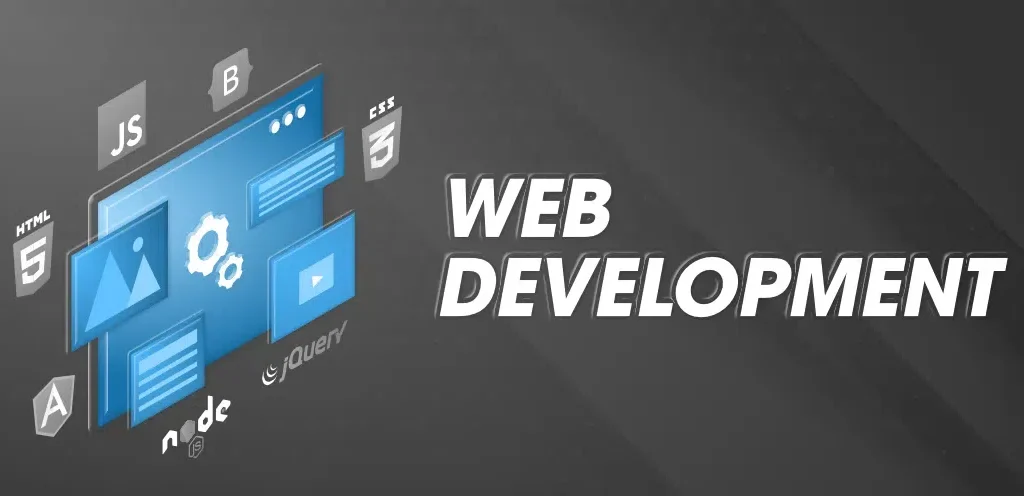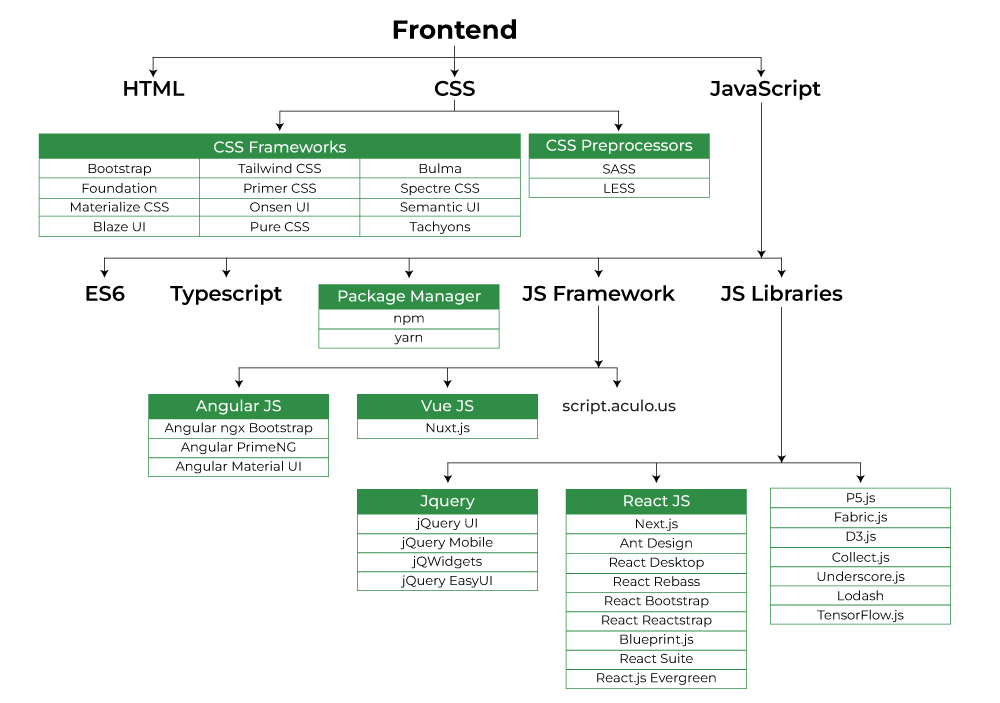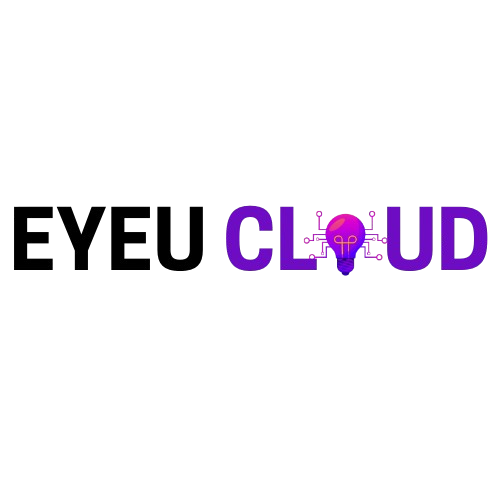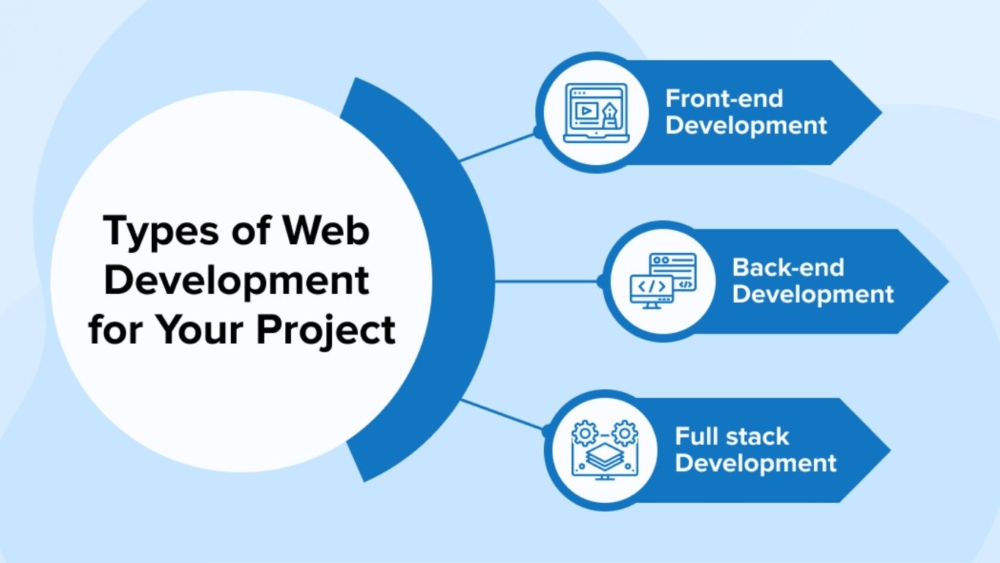The Web Development Roadmap offers a comprehensive guide for navigating the expansive and ever-evolving world of web development. It highlights essential skills, tools, and technologies, starting from the basics like HTML, CSS, and JavaScript, and advancing to more complex frameworks and back-end development. By following this roadmap, you can systematically enhance your knowledge and skills, thereby gaining a well-rounded and current understanding of the web development landscape.
Web development involves creating, building, and maintaining websites. Specifically, it encompasses various aspects such as web design, web publishing, web programming, and database management. Essentially, it refers to the creation of applications that operate over the internet, like websites.
Also Visit: A Complete Guide to Mobile App Development

Web Development
The term “Web Development” comprises two components:
- Web: This refers to websites, web pages, or anything operational over the internet.
- Development: This involves building applications from scratch.
Web Development can be classified into two main categories:
- Frontend Development
- Backend Development
Frontend Development
The frontend of a website is the part that users interact with directly, often termed the “client side” of the application.
Frontend Roadmap

Frontend Development Roadmap
Popular Frontend Technologies
- Popular Frontend Technologies include:
- HTML: Hyper Text Markup Language is used to design the structure of web pages.
- CSS: Cascading Style Sheets simplify the process of making web pages presentable by styling them.
- JavaScript: A scripting language used to add dynamic behavior to websites.
- Bootstrap: A popular CSS framework for developing responsive, mobile-first websites.
- Bootstrap 4
- Bootstrap 5
Frontend Libraries and Frameworks
HTML
CSS
- CSS Frameworks
- Bootstrap
- Tailwind CSS
- Bulma
- Foundation
- Primer CSS
- Spectre CSS
- Materialize CSS
- Onsen UI
- Semantic UI
- Blaze UI
- Pure CSS
- CSS Preprocessors
- SASS
- LESS
JavaScript
- JavaScript Technology
- ES6
- TypeScript
- JavaScript Frameworks
- AngularJS
- Angular ngx Bootstrap
- Angular PrimeNG
- VueJS
- NuxtJS
- script.aculo.us
- Ember.js
- Handlebar.js
- Backbone.js
- AngularJS
- JavaScript Libraries
- jQuery
- jQuery UI
- jQuery Mobile
- jQWidgets
- jQuery EasyUI
- ReactJS
- NextJS
- Ant Design
- React Desktop
- React Rebass
- React Bootstrap
- React Reactstrap
- BlueprintJS
- React Suite
- React.js Evergreen
- React Material UI
- P5.js
- Fabric.js
- D3.js
- Collect.js
- Underscore.js
- Lodash
- TensorFlow.js
- jQuery
Also Visit: A Beginner’s Guide to Desktop App Development
Backend Development
Backend is the server side of a website. The backend is a part of the website that users cannot see or interact with directly. This portion of the software is responsible for storing and organizing data. By managing these tasks behind the scenes, the backend ensures that information is processed efficiently and accurately.
Backend Roadmap

Backend Development Roadmap
Popular Backend Technologies
- PHP: PHP is a server-side scripting language designed specifically for web development.
- Java: Java is one of the most popular and widely used programming languages. It is highly scalable.
- Python: Python is a programming language that lets you work quickly and integrate systems more efficiently.
- Node.js: Node.js is an open source and cross-platform runtime environment for executing JavaScript code outside a browser.
Web Development Tutorials
- HTML
- CSS
- JavaScript
- jQuery
- Bootstrap
- React JS
- AngularJS
- PHP
- Node.js
- Django
- Flask
Some Important Links on Web Development
- Begin Web Development with a Head Start
- Why do you need a Responsive Website
- Top 10 Frameworks for Web Applications
- Web 1.0, Web 2.0 and Web 3.0 with their difference
- 10 Web Development and Web Design Facts That You Should Know
- How can I start to learn Web Development ?
- The Future Of Web Development
- Best Books to Learn Front-End Web Development
- Best Books to Learn Back-End Web Development
- 10 Things You Should Know As a Web Developer
- How to choose a Technology Stack for Web Application Development ?
- Top 10 Tools That Every Web Developer Must Try Once
Elevate your coding journey with a Premium subscription. Benefit from ad-free learning, unlimited article summaries, an AI bot, access to 35+ courses, and more-available only with Geeks for Geeks Premium! Explore now!
Want to be a Software Developer or a Working Professional looking to enhance your Software Development Skills? Then, master the concepts of Full-Stack Development. Our Full Stack Development – React and Node.js Course will help you achieve this quickly. Learn everything from Front-End to Back-End Development with hands-on Projects and real-world examples. This course enables you to build scalable, efficient, dynamic web applications that stand out. Ready to become an expert in Full-Stack? Enroll Now and Start Creating the Future!
Difference between Software Development, Web Development and App Development
Software Development: Software Development, as the name suggests, is a process of developing software products that involve analyzing the needs of users and then design, test and develop software to fulfill those needs or requirements of users. Software is developed using specific programming languages that in turn improves the quality of business.
Web Development: Web Development, as the name suggests, is a process of developing a website for the internet or intranet that includes different tasks such as developing simple web pages, internet applications, social sites, and eCommerce portables. It simply refers to web markup and coding that requires a basic understanding of HTML, CSS, and JavaScript.
App Development: App Development, as the name suggests, is a process of developing mobile applications that should be simple, informative, and easy to navigate. These apps are developed for mobile devices such as personal digital assistants, mobile phones, tablets, etc., and involve technology and resources.
Web Development vs App Development
| Software Development | Web Development | App Development | |
| Definition | It simply refers to the development and maintenance of software that runs across different types of computer. | It refers to the development of the website for use on both mobile and computer devices. | It refers to the development of applications for use on mobile devices. |
| Aim | Its main purpose is to create programmed software simply to meet unique business or personal objectives, goals, or processes. | Its main aim is to provide quality content on the to website, regularly adding and updating information, and establishing trust among users. | Its main aim is to create a better user experience by making the app interactive, intuitive, and user-friendly. |
| Compiler | It needs to be precompiled before deployment. | There is no need to precompile before deployment. | It needs to be precompiled before deployment. |
| Benefits | It improves efficiency, productivity, customer relations, emphasizes business acumen, optimizes the business process, etc. | It improves interaction with existing and potential customers that in turn increase the number of users, improve user engagement, attract lifetime clients, provide visual content on websites, etc. | It increases the number of users to use the app for the maximum time, customer engagement, customer satisfaction, improve efficiency, etc. users |
| Focus | It mainly focuses on finding and implementing the right code and making sure that standard quality is achieved. | It mainly focuses on making information available to users whenever the user requires it. | It mainly focuses on design, user experience, and entertaining features. |
| Process | Its process includes conceiving, specifying, designing, programming, documenting, testing, and other software components. | Its process includes information gathering, planning, design, content writing, coding, maintenance, etc. | Its process includes strategy and consulting, design and branding, coding and development, QA and launch, support and maintenance. |
| Languages used | Languages used to develop software include Python, Java, C++, Scala, etc. | Websites are developed mainly using HTML, CSS, JavaScript. | Apps are developed using HTML, CSS, JavaScript, and languages used can be Python, PHP, etc. |
| Ease of use | It is quite simple, easy to manage, and straight. | It should be simple, compatible, accessible to all users, have faster load time, etc. | It should be simple, perform better, can be customizable, etc. |
Elevate your coding journey with a Premium subscription. Benefit from ad-free learning, unlimited article summaries, an AI bot, access to 35+ courses, and more-available only with Geeks for Geeks Premium! Explore now!
Are you a student in Computer Science or an employed professional looking to take up the GATE 2025 Test? Of course, you can get a good score in it but to get the best score our GATE CS/IT 2025 – Self-Paced Course is available on Geeks for Geeks to help you with its preparation. Get comprehensive coverage of all topics of GATE, detailed explanations, and practice questions for study. Study at your pace. Flexible and easy-to-follow modules. Do well in GATE to enhance the prospects of your career. Enroll now and let your journey to success begin!
Why is web development important?
Can you believe that we’re part of a world where over 5.30 billion people are connected through the Internet? That’s more than half of our global population, actively engaging in research, connection, education, and entertainment through this incredible digital universe.
Given the rapidly increasing number of Internet users, it’s no surprise that web development is a rapidly expanding industry. Between now and 2030, the employment of web developers is expected to grow by 13%, much faster than most other technology careers. It’s an exciting time to be in this field, and I’m thrilled to be part of this dynamic industry.
See why thousands of customers use Content Hub to build an optimized website that integrates with their HubSpot CRM data and full marketing suite.
Web Development vs. Web Programming
Web development and web programming sound very similar — and they are. But there’s one very important distinction.
Web development refers to the overall process of creating websites or web applications, including the project’s design, layout, coding, content creation, and functionality. It involves using a combination of programming languages, tools, and frameworks to bring a website or web application to life. It may also encompass project management activities, such as fielding development requests from stakeholders or freelance clients.
Web programming, on the other hand, specifically refers to the coding and scripting of a website, whether the front-end or back-end. It primarily involves writing code to handle data, process user inputs, and generate dynamic content. A web programmer will rarely, if ever, handle a web development project from end to end. They may build a certain section of a site or troubleshoot bugs.
Understanding this difference has been crucial in my career, allowing me to appreciate the depth and breadth of skills required in the world of web creation. It’s a reminder of the diverse talents and expertise that come together to make the digital world what it is today.
What is website development?
Website development broadly refers to the tasks and processes involved in creating and maintaining a website. This includes everything from markup and coding to scripting, network configuration, and CMS development.
Now that you have a basic understanding of what website development is, let’s go deeper.
Web Development Basics
- What is a website?
- What is an IP address?
- What does HTTP mean?
- What is coding?
- What does front-end mean?
- What does back-end mean?
- What is a CMS?
- What is cybersecurity?
1. What is a website?
Websites are files stored on servers, which are computers that host (fancy term for “store files for”) websites. These servers are connected to a giant network called the Internet.
Now, how do we access these websites? This is where browsers come into play. Browsers are computer programs that load websites via your Internet connection, such as Google Chrome or Internet Explorer, while the computers used to access these websites are known as “clients.”
2. What is an IP address?
I was always fascinated by how the Internet knows where to send data. The answer lies in understanding IP addresses. To access a website, you need to know its Internet Protocol (IP) address. An IP address is a unique string of numbers. Each device has an IP address to distinguish itself from the billions of websites and devices connected via the Internet.
The IP address for HubSpot is 104.16.249.5. You can find any website’s IP address by visiting a site like Site 24×7 or by using Command Prompt on Windows or Network Utility > Traceroute on MacBooks.
If this sounds new to you, that’s because you’ve been using domain names to reach websites. While you can access a website using its IP address, most Internet users prefer to use domain names or by going through search engines.
Pro Tip: To find your device’s IP address, you can also type “what’s my IP address” into your search browser.
3. What does HTTP mean?
Hype rText Transfer Protocol (HTTP) is what connects our website request to the remote server that houses all website data. It’s a set of rules (a protocol) that defines how messages should be sent over the Internet. It allows us to jump between site pages and websites.
“When I type a website into my web browser or search for something through a search engine, HTTP provides a framework that enables the client (computer) and server to speak the same language as they make requests and responses to each other over the Internet.”. It’s essentially the translator between you and the Internet — it reads our website request, reads the code sent back from the server, and translates it for us in the form of a website.
4. What is coding?
Coding refers to writing code for servers and applications using programming languages. “They’re called ‘languages’ because they include vocabulary and grammatical rules for communicating with computers. Furthermore, they also encompass special commands, abbreviations, and punctuation that can only be read by devices and programs.”
All software is written in at least one coding language, but languages vary based on platform, operating system, and style. All languages fall into one of two categories: front-end and back-end.
Pro Tip: Sometimes, you’ll see that businesses are seeking a full-stack developer. This means that you have expertise in both the front and back-end.
5. What does front-end mean?
Front-end (or client-side) is the side of a website or software that you see and interact with as an Internet user. When website information is transferred from a server to a browser, front-end coding languages allow the website to function without having to continually “communicate” with the Internet.
Front-end code allows users to interact with a website and play videos, expand or minimize images, highlight text, and more. Web developers who work on front-end coding work on client-side development.
6. What does back-end mean?
On the contrary, the back-end (or server-side) is the side that you don’t see when you use the Internet. It’s the digital infrastructure, and to non-developers, it looks like a bunch of numbers, letters, and symbols.
There are more back-end coding languages than front-end languages. That’s because browsers — at the front-end — only understand HTML, CSS, and JavaScript, but a server — at the back-end — can be configured to understand pretty much any language.
7. What is a CMS?
A content management system (CMS) is a web application or a series of programs used to create and manage web content. (Note: A CMS isn’t the same thing as a site builder, such as Squarespace or Wix.)
See why thousands of customers use Content Hub to build an optimized website that integrates with their HubSpot CRM data and full marketing suite.
While not required to build a website, using a CMS makes things easier. It provides the building blocks (like plugins and add-ons) and lets you create the structure with your code.
Pro Tip: “Additionally, while your CMS is often used for eCommerce and blogging, it is also useful for all types of websites.”
8. What is cybersecurity?
There are always malicious actors looking to find vulnerabilities in websites to expose private information, steal data, and crash servers. Cybersecurity is the practice of securing data, networks, and computers from these threats.
The methods used by hackers are constantly evolving, as are the security measures taken to defend against them. Failing to understand how your site could be targeted could result in disaster. “As a result, having a basic understanding of cybersecurity best practices is critical for effective web development. “Additionally, conducting security audits on a consistent basis is essential for ensuring ongoing protection and addressing potential vulnerabilities.”. This will ensure that your website doesn’t fall victim to bad actors attempting to steal your information.


